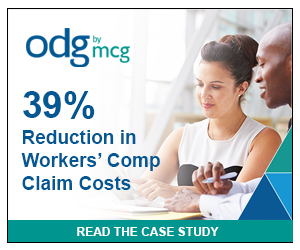Grinberg: About That Other SCOTUS Decision ...
Monday, July 11, 2022 | 0
Naturally, since June 24, when the United States Supreme Court issued its ruling overturning Roe v. Wade, almost all attention has been focused on that decision, and understandably so. Few issues in American political discourse trigger such strong emotions and such polarizing disagreements.

Gregory Grinberg
Further, the issue is rarely one that is hypothetical but has real-world implications. But for this post, I direct you to another decision: New York State Rifle & Pistol Association Inc. v. Bruen, wherein the Supreme Court struck down New York’s law regarding concealed carry permits, a law nearly identical to that of California.
Although the feelings regarding this decision are many and fractured, one area of near-unanimous agreement is about the result: This ruling will increase the frequency of concealed carry permits issued to private citizens.
The California Attorney General issued OAG-2022-02 on June 24, directing that “[p]ermitting agencies may no longer require a demonstration of ‘good cause’ in order to obtain a concealed carry permit.”
As a result, are we going to see more firearms in the workplace? May employers already prohibit bringing firearms to work, but some don’t or have no mechanism of enforcement, given that the very nature of the issue is that it is concealed.
Labor Code Section 3208.3 has a lower standard for AOE/COE for psych claims when the applicant sustains “direct exposure to a significant violent act” (from 51% to 35%-40%). In all likelihood, any violent act involving a gun is going to be considered a “significant violent act.”
Further, Labor Code Section 4660.1 allows for increased permanent disability for a compensable consequence psych claim where there is “exposure to a significant violent act within the meaning of Section 3208.3.”
In light of the high probability that a growing number of Californians will be carrying firearms on their person, employers may want to determine if the circumstances merit adoption of policy regarding firearms at work. Being the cynic and devil’s advocate that I am, I can’t help but wonder if failure to proactively address the potential for firearms at work might lead to claims of serious and willful misconduct as well.
Now, all that being said, there are some advantages to having sane, trained and law-abiding employees armed at work. For example, in 2015, Syed Rizwan Farook and Tashfeen Malik carried out the San Bernardino massacre, murdering 14 and injuring some 22 co-workers in a horrific act of terrorism. Not one of the victims was armed, and all were rendered defenseless. Similar mass shootings in California have typically had a defenseless pool of victims.
But each employer will have to decide for itself, using its best knowledge of its employees and the dangers of the world, where the greater risk lies: in disgruntled employees and accidental shootings, or in intentional violence and no opportunity for mitigation.
It is truly a sad thing that this is the calculus we are faced with, but face it we must.
Gregory Grinberg is managing partner of Gale, Sutow & Associates’ S.F. Bay South office and a certified specialist in workers’ compensation law. This post is reprinted with permission from Grinberg’s WCDefenseCA blog.



Comments